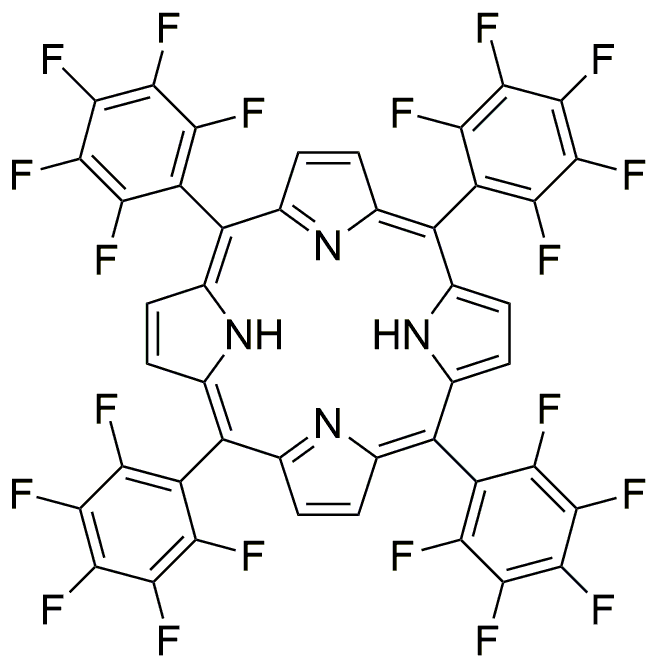5,10,15,20-Tetrakis(pentafluorophenyl)porphyrin is widely utilized in research focused on:
- Photodynamic Therapy: This compound is used in medical applications for cancer treatment, where it acts as a photosensitizer, generating reactive oxygen species upon light activation to target and destroy cancer cells.
- Organic Photovoltaics: It serves as a key material in the development of organic solar cells, enhancing light absorption and improving energy conversion efficiency, making solar energy more accessible and sustainable.
- Fluorescent Probes: In analytical chemistry, it is employed as a fluorescent probe for detecting metal ions and other analytes, providing sensitive and selective measurement techniques in various environmental and biological samples.
- Catalysis: The compound is utilized in catalysis, particularly in organic reactions, where it can facilitate electron transfer processes, improving reaction rates and yields compared to traditional catalysts.
- Materials Science: It is applied in the synthesis of advanced materials, including sensors and nanomaterials, due to its unique electronic properties, which can enhance the performance of electronic devices.
General Information
Properties
Safety and Regulations
Applications
5,10,15,20-Tetrakis(pentafluorophenyl)porphyrin is widely utilized in research focused on:
- Photodynamic Therapy: This compound is used in medical applications for cancer treatment, where it acts as a photosensitizer, generating reactive oxygen species upon light activation to target and destroy cancer cells.
- Organic Photovoltaics: It serves as a key material in the development of organic solar cells, enhancing light absorption and improving energy conversion efficiency, making solar energy more accessible and sustainable.
- Fluorescent Probes: In analytical chemistry, it is employed as a fluorescent probe for detecting metal ions and other analytes, providing sensitive and selective measurement techniques in various environmental and biological samples.
- Catalysis: The compound is utilized in catalysis, particularly in organic reactions, where it can facilitate electron transfer processes, improving reaction rates and yields compared to traditional catalysts.
- Materials Science: It is applied in the synthesis of advanced materials, including sensors and nanomaterials, due to its unique electronic properties, which can enhance the performance of electronic devices.
Documents
Safety Data Sheets (SDS)
The SDS provides comprehensive safety information on handling, storage, and disposal of the product.
Product Specification (PS)
The PS provides a comprehensive breakdown of the product’s properties, including chemical composition, physical state, purity, and storage requirements. It also details acceptable quality ranges and the product's intended applications.
Certificates of Analysis (COA)
Search for Certificates of Analysis (COA) by entering the products Lot Number. Lot and Batch Numbers can be found on a product’s label following the words ‘Lot’ or ‘Batch’.
*Catalog Number
*Lot Number
Certificates Of Origin (COO)
This COO confirms the country where the product was manufactured, and also details the materials and components used in it and whether it is derived from natural, synthetic, or other specific sources. This certificate may be required for customs, trade, and regulatory compliance.
*Catalog Number
*Lot Number
Safety Data Sheets (SDS)
The SDS provides comprehensive safety information on handling, storage, and disposal of the product.
DownloadProduct Specification (PS)
The PS provides a comprehensive breakdown of the product’s properties, including chemical composition, physical state, purity, and storage requirements. It also details acceptable quality ranges and the product's intended applications.
DownloadCertificates of Analysis (COA)
Search for Certificates of Analysis (COA) by entering the products Lot Number. Lot and Batch Numbers can be found on a product’s label following the words ‘Lot’ or ‘Batch’.
*Catalog Number
*Lot Number
Certificates Of Origin (COO)
This COO confirms the country where the product was manufactured, and also details the materials and components used in it and whether it is derived from natural, synthetic, or other specific sources. This certificate may be required for customs, trade, and regulatory compliance.


